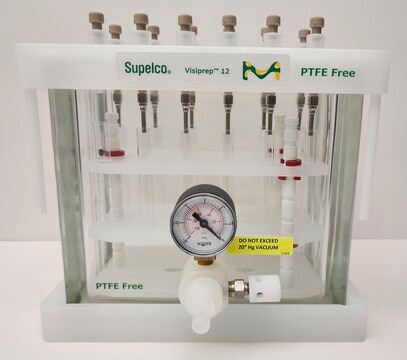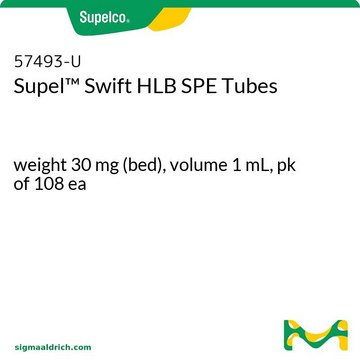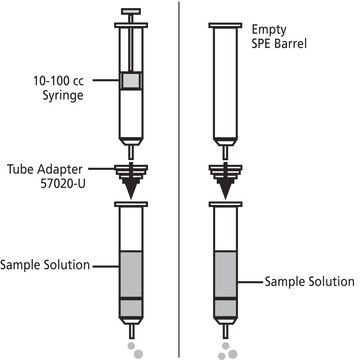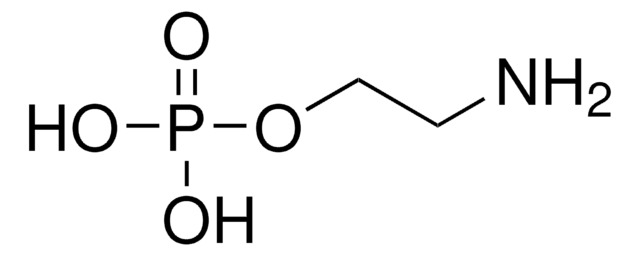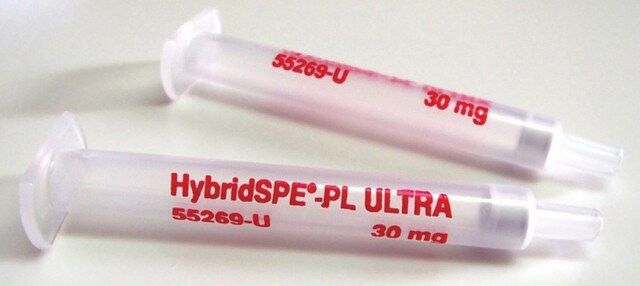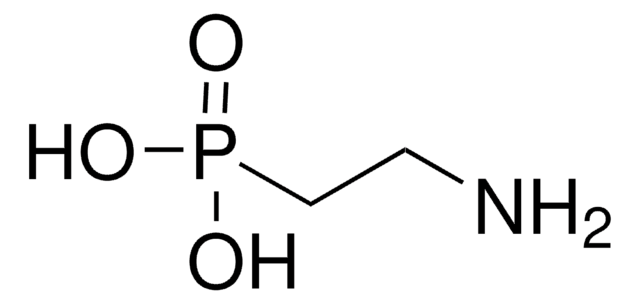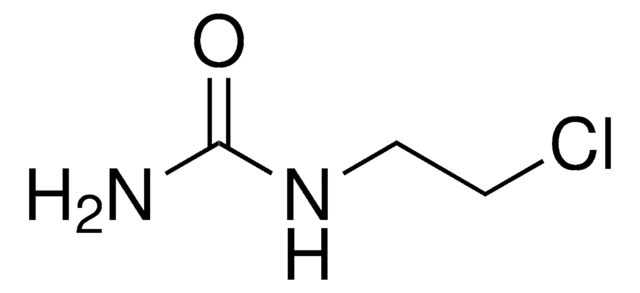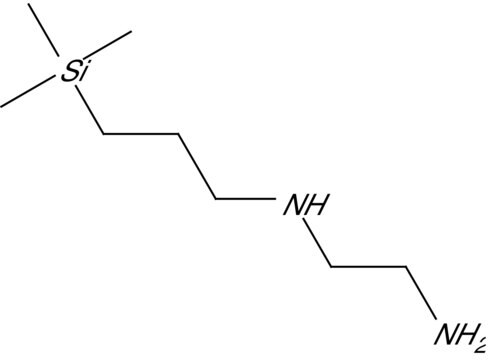推薦產品
材料
PE frit (20 μm)
polypropylene hardware
品質
MS Friendly
成份
bed wt., 30 mg
包裝
pk of 100
技術
solid phase extraction (SPE): suitable
表面積
160-420 m2/g
容積
1 mL
基質
Sulfonic acid functionalized hydrophilic modified styrene polymer particle platform
基質活性組
sulfonic acid phase
粒徑
50-70 μm
孔徑
80-200 Å pore size
應用
food and beverages
分離技術
ion exchange
尋找類似的產品? 前往 產品比較指南
一般說明
Sample Matrix Compatibility: Aqueous solutions (biological fluids, water)
- Sulfonic acid functionalized hydrophilic modified styrene polymer
- Developed for the extraction of a highly broad range of compounds from aqueous samples
- Retention predominately based on ion-exchange; however, because the phase is hydrophilic modified, it is amenable to polar compounds as well.
View related article: Isolation and LC-MS Characterization of Illicit Bath Salts in Urine
特點和優勢
- 价格低廉但具有出色的样品制备性能
- 可用于通用方法 — 在方法开发时省时、成本低并减少麻烦
- 容量更大,床重更轻 = 洗脱体积更小 = 处理样品更迅速
- 能忍受过度干涸,可用于更极端条件的方法
- 低紫外和质谱可提取物,背景更低,灵敏度更高
- 严格的生产和质量控制原则提供更好的批次之间、管之间以及孔之间的一致性,能获得更好的准确度和精度
法律資訊
訊號詞
Warning
危險聲明
危險分類
Eye Irrit. 2 - Skin Irrit. 2 - STOT SE 3
標靶器官
Respiratory system
儲存類別代碼
11 - Combustible Solids
水污染物質分類(WGK)
WGK 3
閃點(°F)
Not applicable
閃點(°C)
Not applicable
文章
The combination of ion-exchange SPE with the HILIC HPLC separation provides a novel approach for the testing of problematic bath salt compounds.
The combination of ion-exchange SPE with the HILIC HPLC separation provides a novel approach for the testing of problematic bath salt compounds.
SPE retention mechanism in this case is based on the electrostatic attraction of charged functional groups of the analyte(s) to oppositely charged functional groups on the sorbent.
SPE retention mechanism in this case is based on the electrostatic attraction of charged functional groups of the analyte(s) to oppositely charged functional groups on the sorbent.
條款
Separation of 3,4-Methylenedioxypyrovalerone HCl (MDPV) solution, 1.0 mg/mL in methanol (as free base), ampule of 1 mL, certified reference material; Buphedrone hydrochloride solution, 1.0 mg/mL in methanol (as free base), ampule of 1 mL, certified reference material; 3-Fluoromethcathinone hydrochloride solution, 1.0 mg/mL in methanol (as free base), ampule of 1 mL, certified reference material; Butylone hydrochloride solution, 1.0 mg/mL in methanol (as free base), ampule of 1 mL, certified reference material; Ethylone hydrochloride, 1.0 mg/mL in methanol (as free base), ampule of 1 mL, certified reference material; 4-Fluoromethcathinone hydrochloride solution, 1.0 mg/mL in methanol (as free base), ampule of 1 mL, certified reference material; Mephedrone hydrochloride solution, 1.0 mg/mL in methanol (as free base), ampule of 1 mL, certified reference material; Methylone hydrochloride, 1.0 mg/mL in methanol (as free base), ampule of 1 mL, certified reference material; Methedrone hydrochloride solution, 1.0 mg/mL in methanol (as free base), ampule of 1 mL, certified reference material
Retention occurs through polar interaction between the sorbent and analytes. Typical sample matrices that can be employed in normal-phase SPE include hydrocarbon or fatty oils diluted in a solvent like hexane, isooctane, chlorinated solvent, THF, diethyl ether, or ethyl acetate.
我們的科學家團隊在所有研究領域都有豐富的經驗,包括生命科學、材料科學、化學合成、色譜、分析等.
聯絡技術服務